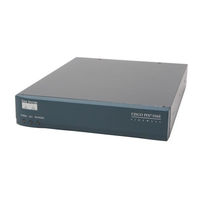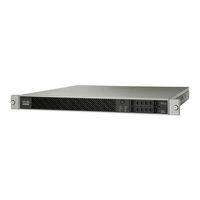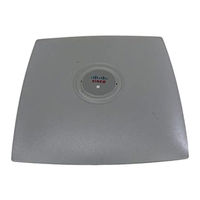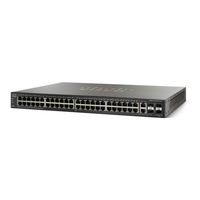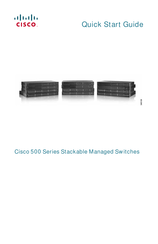Cisco 500 Series Manuals
Manuals and User Guides for Cisco 500 Series. We have 21 Cisco 500 Series manuals available for free PDF download: Configuration Manual, Administration Manual, Quick Start Manual, User Manual, Safety Information Manual, Manual, Troubleshooting And Maintenance, Quick Start Quide, Quick Reference Manual, Datasheet
Cisco 500 Series Configuration Manual (1140 pages)
Security Appliance Command Line
Brand: Cisco
|
Category: Security System
|
Size: 12 MB
Table of Contents
Advertisement
Advertisement
Cisco 500 Series Configuration Manual (144 pages)
Wireless Express Mobility Controller
Brand: Cisco
|
Category: Controller
|
Size: 3 MB
Table of Contents
Cisco 500 Series Quick Start Manual (72 pages)
500 Series Stackable Managed Switches
Table of Contents
Cisco 500 Series Safety Information Manual (42 pages)
Cisco Systems Router Regulatory Compliance and Safety Information
Brand: Cisco
|
Category: Network Router
|
Size: 4 MB
Table of Contents
Cisco 500 Series Quick Start Quide (13 pages)
Cisco Small Business 500 Series
Brand: Cisco
|
Category: Wireless Access Point
|
Size: 0 MB
Table of Contents
Cisco 500 Series Datasheet (5 pages)
Brand: Cisco
|
Category: Conference System
|
Size: 0 MB
Table of Contents
Cisco 500 Series Manual (4 pages)
Cisco Systems Security Appliances Upsell Guide
Brand: Cisco
|
Category: Network Router
|
Size: 0 MB
